South Sudan Travel Guide
This is a South Sudan Travel Guide from taste2travel.com
Date Visited: April 2024
Introduction
Welcome to South Sudan, the world’s newest country, a land of vast plains, vibrant cultures, fascinating tribes and untamed wilderness.

A Mundari cattle herder, covered in cow-dung ash.
Nestled in the heart of East Africa, South Sudan is a country rich in diversity and history, offering travellers a unique and immersive experience like no other.

Sunset north of Juba.
South Sudan boasts a tapestry of completely undeveloped, and untouched, landscapes, from the lush greenery of its swamps and savannas to the rugged peaks of its mountain ranges.

A young Mundari girl.
The concept of tourism is new to South Sudan and at this early stage there are many bureaucratic hurdles to visiting the country. All of these are outlined in the following sections of this guide.
Currently, the only sensible way to visit South Sudan is to engage the services of a local tour company.

Home to the Lotuko tribe since the 14th century, the very remote Ilieu village is nestled among giant granite boulders.
I traveled to South Sudan with Kinyeti Wild Tours who I would recommend (full details are included in the ‘Tour Company‘ section below).
As for the South Sudanese, I found them to be a kind, warm and welcoming people. They have much to be proud of and are eager to share their rich cultural heritage with curious travellers.

No shortage of warm smiles in South Sudan.
Corruption permeates every aspect of life in South Sudan and it would seem the main economic activity is government officials extracting bribes from the beleaguered population.
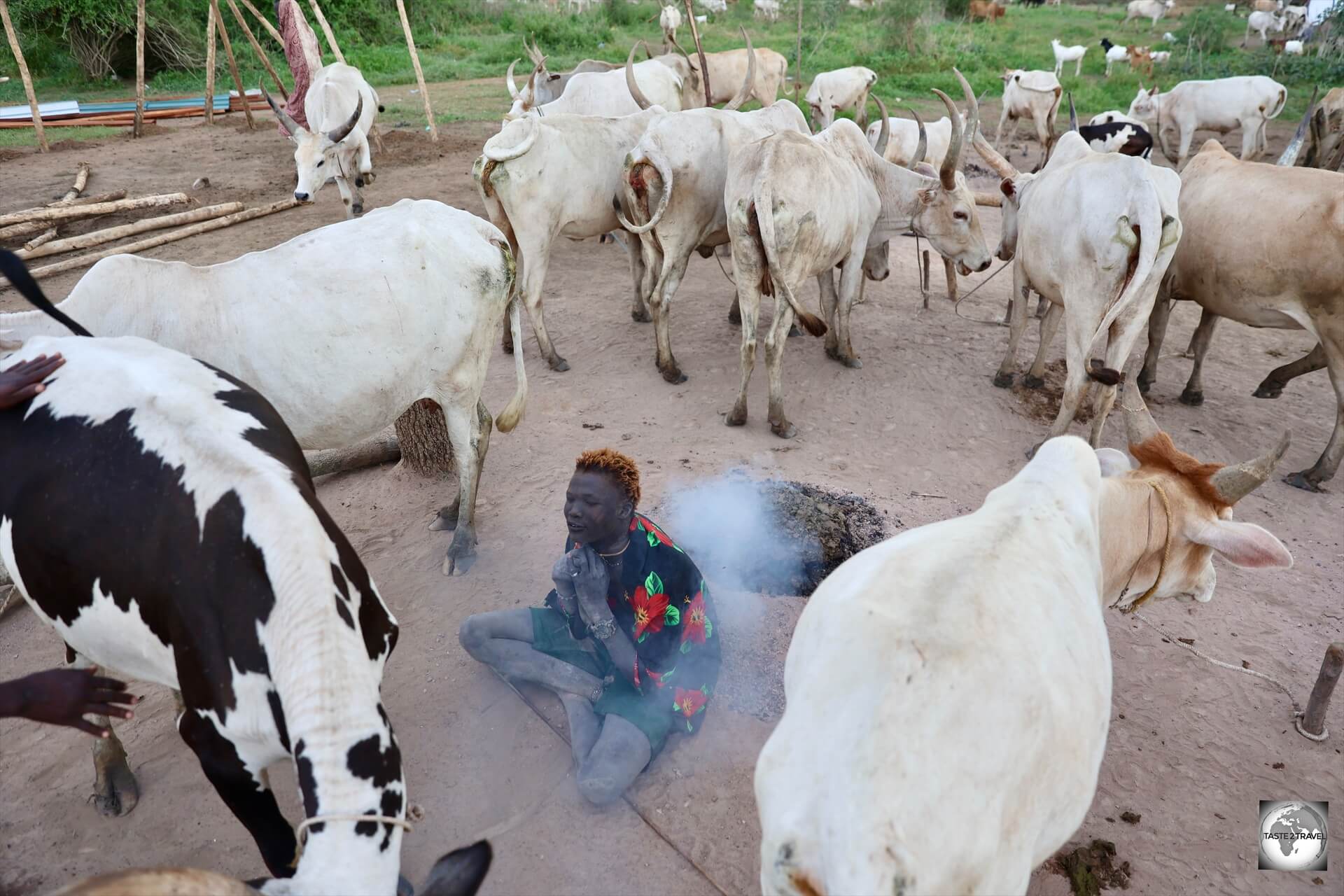
A Mundari cattle herder, surrounded by his cows.
In this South Sudan Travel Guide, I provide insights, recommendations, and practical tips to make the most of your visit.
While the country is open to tourists, it is, currently, best suited to intrepid, adventurous travellers.

Birds, feeding off of bugs on a Ankole-Watusi cow.
Location
South Sudan is located in East-Central Africa, bordered by six countries, making it a landlocked nation.
To the north, Sudan, from which South Sudan gained independence in 2011 after decades of civil war, shares a 1,900-kilometre (1,200 miles) border with South Sudan.
To the east, Ethiopia shares a 1,300-kilometre (810 miles) border with South Sudan.
To the southeast, Kenya shares a border of 232-kilometres (144 miles), while to the south, Uganda, shares a border of 435-kilometres (270 miles) with South Sudan.
The Ugandan border crossing in the town of Nimule, is the busiest, and most significant land border crossing to South Sudan.
Meanwhile, to the west, the Central African Republic shares a 682-kilometre (424 mile) border with South Sudan. The boundary between the two countries is relatively porous and has experienced some instability due to conflicts in the region.
Lastly, in the southwest, the Democratic Republic of the Congo shares a 714-kilometre (444 miles) border with South Sudan. This border is marked by the flow of the Nile River.

Views of the countryside in south-eastern South Sudan.
South Sudan’s landscape is characterised by vast plains, swamps, and savannas, as well as mountainous regions in the southeast and the far west.
The White Nile, one of the two main tributaries of the Nile River, flows through the country from south to north, providing water resources and supporting agriculture and wildlife habitats.

The south-east of South Sudan is characterised by large granite boulders rising up over green plains.
Additionally, South Sudan is home to significant wetland areas, including the Sudd, one of the largest freshwater wetlands in the world.
People

A Mundari cattle herder, one of 60 distinct ethnic groups in South Sudan.
The people of South Sudan are as diverse and vibrant as the landscapes of their country.
Comprising over 60 distinct ethnic groups, each with its own language, traditions, and customs, the population of South Sudan is a mosaic of cultures, beliefs, and identities.

Young Mundari girls.
Hospitality is deeply ingrained in South Sudanese culture, and I can attest that I was always made to feel welcome.
Family and community play central roles in South Sudanese society, with strong kinship ties forming the backbone of social life.
Elders are highly respected, and traditional values are upheld with pride, even in the face of modernisation.

Lotuko children, playing a game, in Ilieu village, south-eastern South Sudan.
Despite the challenges posed by decades of conflict and hardship, resilience runs deep in the spirit of the South Sudanese people.
In recent years, efforts to foster reconciliation and unity have gained momentum, as South Sudanese from all walks of life work towards healing the wounds of the past and forging a path towards peace and prosperity.

The incredibly photogenic Mundari adolescents tend to the cattle camps, sweeping them clean and collecting cow manure for the fires.
Amidst the challenges, the people of South Sudan remain hopeful, resilient, and proud of their rich cultural heritage.
Flag

The flag of South Sudan, bearing a tilted star.
The flag of South Sudan is a symbol of the nation’s identity and aspirations.
Adopted on July 9, 2011, when South Sudan gained independence from Sudan, the flag embodies the hopes and dreams of its people for a future of peace, unity, and prosperity.
The flag was designed by Samuel Ajak, who was an artist and brigadier general for the Sudan People’s Liberation Army under revolutionary leader John Garang.
The flag was never formally defined in detail, which has led to many misunderstandings regarding its official colours or the rotation of the yellow star.
The flag of South Sudan bears similarities with the flags of Sudan and Kenya. It shares the black, white, red, and green of the Sudanese flag, in addition to having a chevron along the hoist.
One difference between the flags of Sudan and South Sudan is that there is a yellow star inside the blue chevron, representing the unity of South Sudan.
The horizontal black, white, red, and green bands of the flag share the same design as the Kenyan flag, and the Pan-African symbolism thereof.
According to the government of South Sudan, the colours of the flag represent the following:
- Black: Represents the people of South Sudan.
- Red: Represents the blood that was shed for the independence of the country.
- Green: Represents the country’s agricultural, natural wealth, land, as well as progress.
- White: Represents peace.
- Blue: Represents the waters of the Nile River, which flows through the country.
- Yellow: Represents unity (of the states), hope, and determination for all people.
Flag in Dispute

The flag of South Sudan, bearing an upright star.
The Flag of South Sudan is still disputed about whether the yellow star is tilted to the right slightly or whether it is upright.
Both of these designs are commonly used.
Currency

The currency of South Sudan is the South Sudanese Pound (SSP).
The official currency of South Sudan is the South Sudanese Pound, which has the international currency code of SSP.
The currency came into being on the 9th of July 2011, at the time of independence.
The currency, which is issued by the Bank of South Sudan (BoSS), consists of just three bank notes – 100, 500 and 1,000 SSP.

The obverse side of the South Sudanese Pound banknotes features the image of John Garang, the founding father of South Sudan.
The obverse side of each banknote features the image of John Garang, a former Sudanese politician and revolutionary leader, who is credited with being the founding father of South Sudan.
John Garang died under mysterious circumstances in 2005 when the Ugandan presidential (Mi-172) helicopter he was flying in crashed.

The reverse side of the South Sudanese Pound features wildlife and the River Nile.
The reverse side of the South Sudanese Pound features Ostriches on the 1,000 SSP note and a lion on the 100 SSP note.
The 200 SSP note features a panorama of the Nile River, which flows through South Sudan.
Exchange Rate

My wad of 100 x 100 SSP bank notes.
Currently (May 2024), US$1 = 2,500 SSP which means the wad of 100 x 100 SSP pictured above is worth just US$4.

The currency of South Sudan is the South Sudanese Pound (SSP).
Exchange rates quoted on the internet are false since these are the official rates which no one in South Sudan uses.
Costs
One of the world’s poorest countries is one of the most expensive to visit!
- Return airfare from Dubai to Juba with Ethiopian Airlines: US$1,000
- 4-day tour (all inclusive): US$2,150
- Visa: US$120
- Standard Room at the Royal Palace Hotel in Juba: US$120 per night
Tour Company

I travelled to South Sudan with Kinyeti Wild Tours.
With a lack of infrastructure and little public transport, plus many bureaucratic hurdles, it’s best to engage the services of a local tour company when organising a trip to the world’s newest country.
I normally travel strictly as a solo, independent traveller – without the aid of a tour guide or tour company.
However, I would highly recommend you engage a local tour guide / company for your trip to South Sudan.
I will outline the reasons for this advice below.
There are many bureaucratic requirements for a visit to South Sudan, requirements which can only be completed by a local tour company.

The very organised, competent, and enthusiastic, Isaac Lotwal, the owner of Kinyeti Wild Tours.
I travelled to South Sudan with Kinyeti Wild Tours who I would recommend.
The company was founded by Isaac Lotwal and is one of the very few tour operators in South Sudan – a country where the concept of tourism is still unfamiliar and tourists are (sometimes) viewed with suspicion.
Tour Costs
Tours to one of the world’s poorest countries are surprisingly expensive.
I paid US$2,150 for a 4-day tour which included visits to two tribes, accommodation, food, transport, guiding, photography permit, foreigners’ registration process and airport transfers.
During our visit to the Mundari tribe, I was told the tribe charges US$200 per visitor and are happiest when a group arrives since a large number of visitors is much more lucrative.
Payment Options
Credit cards are not accepted in South Sudan, nor are online payment methods such as PayPal.
There are two options for paying for tours – either a good old fashion bank transfer or you simply carry the cash with you and hand it to your guide on arrival (in a discreet setting of course!).
Bureaucracy
A visit to South Sudan requires a Letter of Invitation (which can only be issued by a locally-registered company), a Photography Permit (which must be obtained from the government, by a local company, before you arrive in the country), and a separate Foreigners’ Registration process once you have arrived in Juba.
All of these requirements will be completed by the local tour company.
Letter of Invitation

My Letter of Invitation (LOI) for South Sudan, which was issued by Kinyeti Wild Tours.
During the e-visa application process, visitors to South Sudan are required to upload a Letter of Invitation from a local South Sudan tour company.
Such a letter (pictured above) was issued to me by Kinyeti Wild Tours.
Photography Permit
Anyone carrying photography equipment (drones are strictly banned) will need to obtain a Photography Permit in advance of their arrival.
The cost for this permit is a whopping US$550 which is nothing more than a blatant tourist tax.
The only way to obtain this prior to your arrival is through a local tour company.
When I arrived at Juba airport, I was met by Isaac who had a folder full of paperwork for my visit. This also included the Photography Permit.
Isaac led me to a customs office where he handed over the permit and I handed over my Canon DSLR (EOS R6). A customs officer (who obviously had no idea what he was looking at), performed a cursory check of my camera and the permit before letting me go.
At no stage in South Sudan was my photography permit requested.
However, it was checked once again when I departed from Juba airport.
Note:
If you are travelling only with a smartphone camera, you do not need to apply for a Photography Permit.
Such permits are for large format DSLR cameras.
Foreigner Registration Process

Upon arrival in South Sudan, all visitors are required to undergo a separate ‘Foreigner Registration Process’, which is stamped into your passport.
Upon arrival in the country, all foreigners in South Sudan are required to register at the Central Immigration office in Juba.
Isaac took care of this process while I relaxed at my hotel after my long flight.
The sticker from this process will take up half a page in your passport.
Conclusion
There is much in the way of paperwork to be completed by visitors to South Sudan. For this reason, it is imperative you travel through a local tour company.
There is also the issue of a lack of public transport and terrible infrastructure.
You will need a private car with driver and guide in order to explore beyond Juba!
Sightseeing
Juba

A sunken boat, in the middle of the White Nile River in Juba.
Juba is an unremarkable, gritty, chaotic, less-than-charming capital of dusty, (mostly unsealed) streets, lined with simple corrugated iron structures.
There are very few solid buildings in South Sudan, except for a small area in downtown Juba which is home to a collection of hotels, government ministries, the Presidential Palace, NGO’s and a few banks.
One iconic site in Juba is that of a sunken boat which lies just off the shore of the White Nile, near one of Juba’s most popular expat bars – the AFEX River Camp.

A large copper Rhinoceros monument at the AFEX River Camp in Juba.
The story of this boat is that it had been damaged while unloading goods. The motor failed and the boat drifted downstream until it eventually became stuck in its current location.
Tribal Visits
During my stay in South Sudan, I visited two tribes – the Lutoko tribe and the Mundari tribe.
Lutoko Tribe
Ilieu Village Views

A view of the village of Ilieu. The Lutoko tribe have inhabited the slopes of this escarpment since the 14th century CE.
Located in Eastern Equatoria State, a 5-hour drive from Juba, along bumpy, heavily pot-holed, red-earth roads, the village of Ilieu is home to the Lotuko tribe, who have lived on the slopes of a steep escarpment since at least the 14th century.

Views of the surrounding plains from Ilieu village.
Over the centuries, the tribe have moved large boulders into place to create laneways and stone fences. Inside these fences, small family compounds are kept neat and clean.
The entire village is kept spotlessly clean, unlike other urban environments throughout South Sudan.
The roof thatching is especially interesting since it’s made from bundles of tightly knotted grass which are then tied together in layers.
There are two water sources, neither of which are conveniently located in the village. Instead, villagers must hike downhill (20 minutes) or uphill to fill water containers which they then haul back to the village.
Due to the remote location of Ilieu village, a 5-hour drive from Juba, I camped overnight in the village school yard.

Ilieu village is located on the slopes of an escarpment in the remote south-east region of South Sudan.

A view of Ilieu village, home of the Lotuko tribe.

Views of the surrounding countryside from Ilieu village.

A young girl, on her way to collect water from a source high up on the granite boulder which overlooks the village.

Laneways constructed from granite boulders and fences made from tree branches.

Walking through Ilieu village involves lots of clambering over giant granite stones.

Laneways and fences in Ilieu village, constructed of granite stones and wooden tree branches.

Over the centuries, the tribe have moved large boulders into place to create laneways and stone fences.

Constructing laneways in Ilieu village is very labour-intensive.

A village kitchen, with a fire below and food storage above.
Grinding Grain

A young Lotuko girl, grinding grain.
Grinding grain is an important activity which has taken place for many centuries in the village.
Evidence of former grain grinding sites can be seen throughout the village.

Remnants from centuries of grinding activity.

A grinding stone in a village compound.

A large grinding stone and views of Ilieu village.
Portraits of the Lotuko

Portraits of the Lotuko tribe at Ilieu village.
One of many tribal groups in South Sudan, the Lotuko, are a Nilotic (of the Nile valley) ethnic group whose traditional home is the Eastern Equatoria state of South Sudan.
Their region is characterised by ranges and mountain spurs such as Mount Kinyeti, the highest mountain in South Sudan with an altitude of 3,186 metres (10,453 ft) above sea level.
Isaac named his tour company after this mountain, which he has climbed. Isaac is a native of a village which lies in the shadow of Mount Kinyeti.

Portraits of the Lotuko tribe at Ilieu village.

Portraits of the Lotuko tribe at Ilieu village.

Portraits of the Lotuko tribe at Ilieu village.

Portraits of the Lotuko tribe at Ilieu village.

Portraits of the Lotuko tribe at Ilieu village.

Portraits of the Lotuko tribe at Ilieu village.

Portraits of the Lotuko tribe at Ilieu village.
Mundari Tribe

A sunset view of a Mundari cattle camp.
The Mundari are a small ethnic group of roughly 100,000 (very tall) people, who are renowned cattle-herders and agriculturalists.

A Mundari girl using her arms to imitate the curvy cow horns.
They are one of the ethnic groups indigenous to the Nile valley (Nilotic). Their main homeland is located north of Juba, the capital of South Sudan.

Mundari boys at the Mundari cattle camp.
Nomadic cattle-herders, they move their cattle camps to areas which offer the greenest pastures where their cattle can feed.

Birds, feeding off of bugs on a Ankole-Watusi cow.
Cattle are the Mundari’s primary source of wealth; the cows serve as a form of currency (these days, an attractive bride can “cost” as much as 100 cows) and, as such, have become a symbol of status and power.

A young Mundari girl, working in the cattle camp.
Marriages are arranged by the prospective groom offering cattle to the bride’s family and husbands may take as many wives as they can support.
Ankole-Watusi Cows
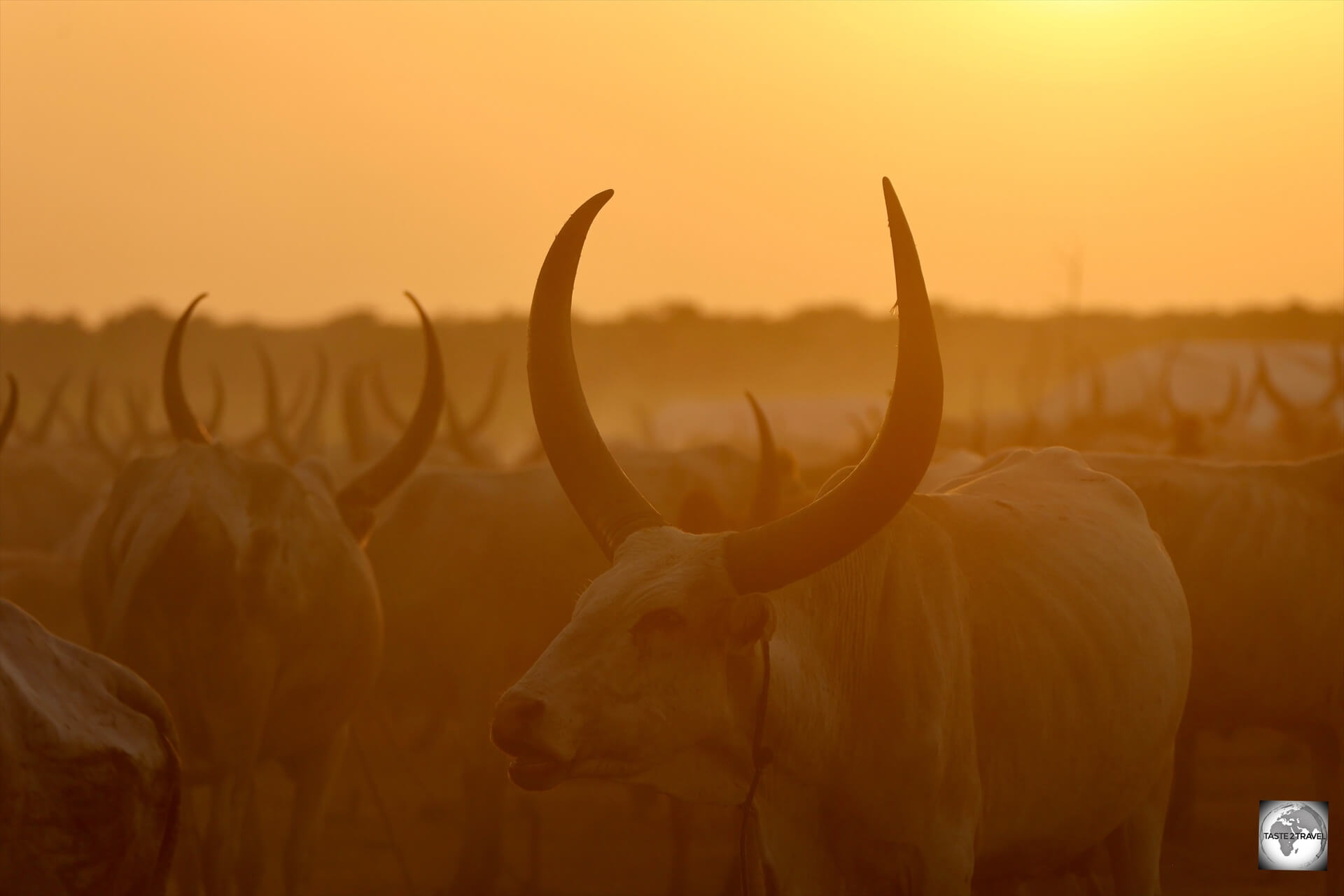
Ankole-Watusi cows at a Mundari cattle camp.
The Mundari tend large herds of Ankole-Watusi cows, which are renowned for their impressively large and curly horns.
The cows are known as “the cattle of kings” because they were preferred by African kings.

A Mundari adolescent, who loved being photographed.
A herd of Ankole-Watusi cows is still kept at the former Royal Palace in Nyanza, Rwanda (click to view these cows in my Rwanda Travel Guide).
The Mundari have an all-encompassing relationship with their cows, they sleeping alongside them, massage them with cow-dung ash and build fires to keep them warm and to keep the bugs away.
Their cows are treasured family members!

A happy Mundari cattleman, surrounded by his beloved cows.
The Mundari tend to consume fish caught from the nearby Nile River. They do no eat their cows, but consume the milk which is produced by them.

Ankole-Watusi cows have the most incredibly curvy horns.

A young boy posing with an Ankole-Watusi cow.

Who’s the odd one out here?

Because of their preference by African rulers, Ankole-Watusi cows are known as “the cattle of kings”.

The Mundari sculpt the horns of their cows to make them curvier.

The Mundari live lives which are closely intertwined with their beloved cows.

Ankole-Watusi cows at a Mundari cattle camp.

Young Mundari girls, imitating the curved horns of their cows.

The Mundari build fires to keep their cows warm and the mosquitos away.

Tension in the camp!

Each evening, when the cows return to camp, they return to the exact same spot where they are tied to a small peg in the ground.

Ankole-Watusi cows at a Mundari cattle camp.
Cow-Dung Ash

The Mundari cover their skin in cow-dung ash to protect against mosquito bites.
The Mundari collect and burn the copious amounts of cow dung which is produced each day in the cattle camp.
The ash produced from the dung is smeared on their bodies to protect against mosquito bites.
The Mundari also massage the ash into the hides of their cows to provide them with protection against mosquitos.

The Mundari cover their skin in cow-dung ash to protect against mosquito bites.
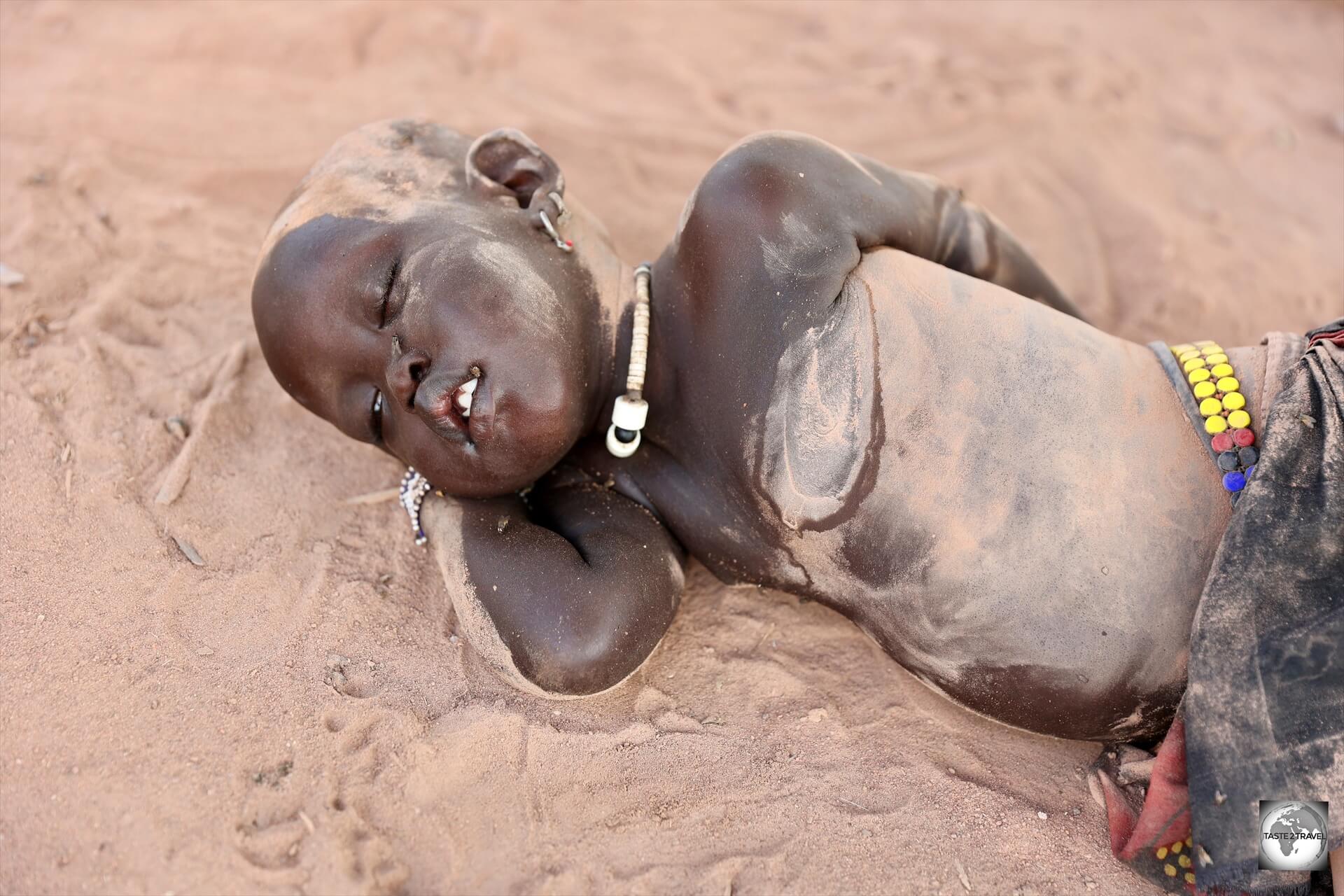
A Mundari baby, covered in cow-dung ash to protect against mosquito bites, sleeping on the ground.

A Mundari baby, covered in cow-dung ash to protect against mosquito bites, sleeping on the ground.

A Mundari man, rubbing cow dung ash into the hide of one of his cows.

A Mundari man, rubbing cow dung ash into the hide of one of his cows.

A Mundari man, rubbing cow dung ash into the hide of one of his cows.

Gathering the ash from the fire.
Cattle Camp Maintenance

A Mundari boy, sweeping the camp grounds.
Mundari cattle camps are kept clean by the Mundari children and adolescents who collect cow dung for the fires and who sweep the areas around the cattle camp.

A Mundari boy, sweeping the camp grounds.

Collecting cow dung in a Mundari cattle camp is a never-ending job.

A Mundari girl, sweeping the camp grounds.

A Mundari girl, sweeping the camp grounds.

A Mundari girl, sweeping the camp grounds.

A Mundari girl, gathering cow dung which will be burnt on one of the many camp fires.

A Mundari boy, gathering fresh cow dung which will be burnt on one of the many camp fires.
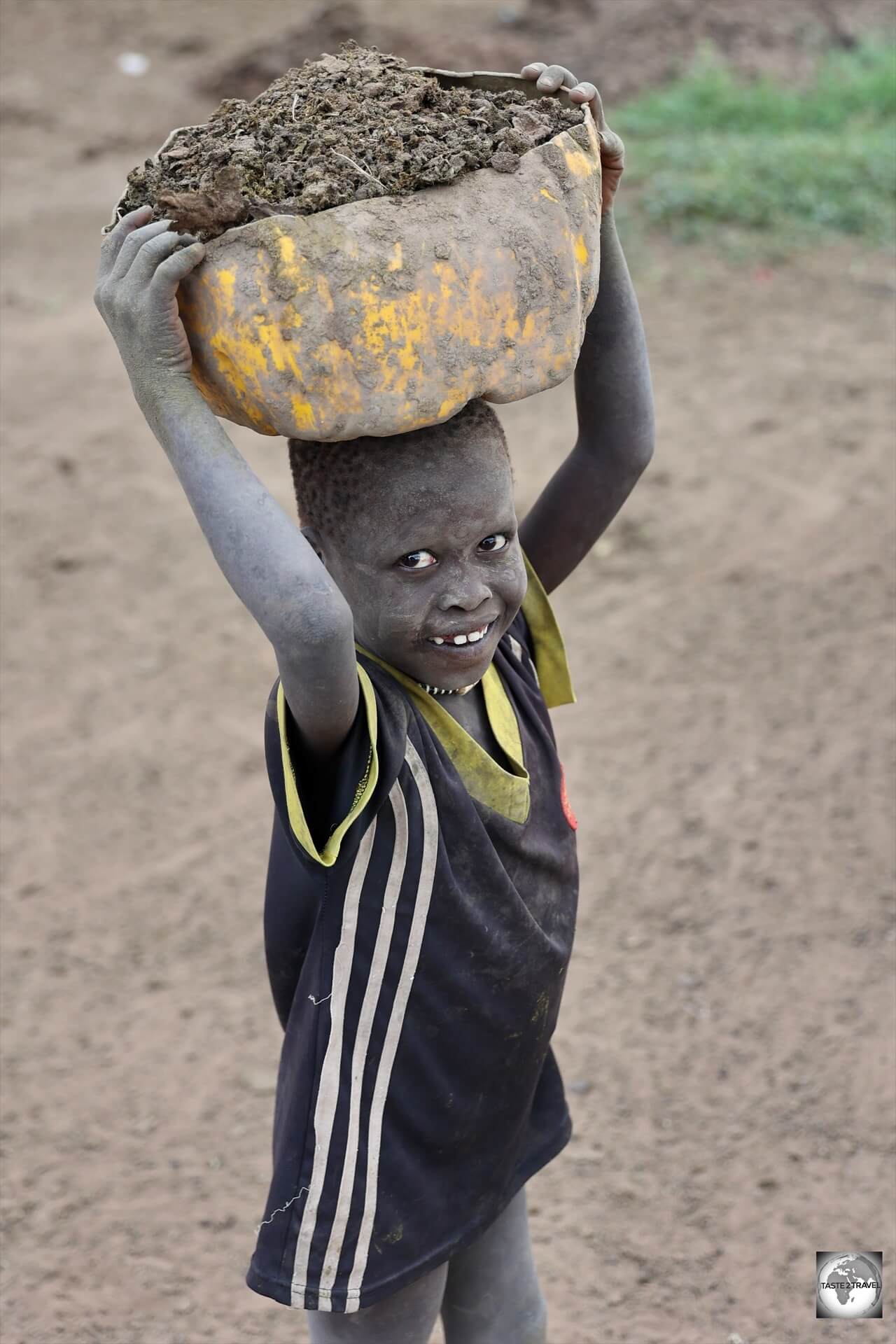
The collecting of cow dung keeps most of the Mundari children busy.

Collecting cow dung.

A young Mundari boy, with hair which has been treated with cow dung ash and washed with cow urine, collecting cow dung.

A young Mundari girl, collecting cow dung for the fire.
Mundari Beauty Treatment

Mundari men of South Sudan rub cow-dung ash into their hair and then bathe their hair in cow urine.
A unique Mundari beauty treatment involves massaging cow-dung ash into the hair of Mundari men.
The hair is then washed with cow urine. The uric acid gives the hair a copper-colour tint which the Mundari regard as beautiful.

A container of cow urine, ready to be used as a hair rinse treatment.

A Mundari beauty salon.

Massaging cow-dung ash into the hair of a Mundari man.
Portraits of the Mundari

Two Mundari cattle herders on a motorbike.

A Mundari man in a sudden gust of wind.

A Mundari cattle herder, sitting among his herd.

A young Mundari girl.

A young Mundari girl.

A young Mundari boy.

A young Mundari boy.

A young Mundari boy.

A young Mundari boy.

A young Mundari girl.

Young Mundari girls.
Accommodation

Clocks at the Royal Palace Hotel in Juba.
Juba
During my stay in South Sudan, I stayed at the very good Royal Palace Hotel in Juba which offers three different room types, with a Standard Room costing US$120 per night (including a buffet breakfast).

My comfortable and spacious ‘Standard room’ at the Royal Palace Hotel in Juba.
The Royal Palace Hotel is located a short walk from the Nile River, in a neighbourhood of dusty, dirt streets and a mish-mash of buildings and businesses. This is downtown Juba!

The bathroom in my room at the Royal Palace Hotel in Juba.
Located in a secure compound, behind high security walls, the calm and relaxing ambience of the Royal Palace Hotel is a welcome respite from the dusty and chaotic streets of Juba.

The Royal Palace Hotel claims that their swimming pool is the largest in South Sudan.
The hotel boasts the largest swimming pool in South Sudan which strangely is the same depth throughout at almost 6 feet (183 cm).
The cafe at the hotel serves some of the best Barista-made coffee in South Sudan.
Camping

Our campsite, during our visit to the remote Lotuko tribe at Ilieu village.
I have to admit – I’m not a fan of camping!
Despite being a boy scout in my childhood, who did lots of camping, I have definitely become accustomed to comfortable hotel rooms.
Due to the remote location of Ilieu village (home to the Lotuko tribe), which is a 5-hour drive, along atrocious dirt roads from Juba, we had no option but to camp the night at the village.

Setting up our campsite, which was in the school yard of Ilieu village.
Isaac has invested heavily in good camping equipment which he has sourced from South Africa.
The tents, bedding, food and everything else was very comfortable.
If you plan to spend time visiting the different tribes of South Sudan, you should be prepared for some nights of sleeping under the stars.
There are very few facilities outside of the capital, Juba.
In the morning, after our night of camping, Isaac and our driver where packing away one of the tents.
When they moved the tent (which they had slept in), a startled, large, black, scorpion came out of its burrow and started running around with its tale fluttering in the air. He was quickly stomped on!
Eating Out
The cuisine of South Sudan reflects the country’s rich cultural diversity and its agricultural heritage.
It primarily consists of grains, vegetables, fruits, and meat, with significant regional variations influenced by the availability of local ingredients and traditional practices.
Especially popular is fish from the Nile River which flows through the country.
Restaurants
Hotel Torit

My lunch stop at the Hotel Torit, which is the main hotel in Torit, the capital of Eastern Equatoria.
While in Torit (the regional capital of Eastern Equatoria State), I stopped for lunch at the Hotel Torit, a tired and run-down hotel which happens to be the best in town.

A view from the restaurant at the Hotel Torit.
The rather forlorn, Hotel Torit, is a government-owned, tired, dirty, run-down establishment, where rooms cost US$60 per night.

A view of the restaurant at the Hotel Torit.
I was the only guest in the hotel restaurant which offers one set meal at lunchtime.

Chicken and rice for lunch at the Hotel Torit.
I was served chicken and rice which gave me a bad case of diarrhea. Not recommended!
Bars

“South” – the very quaffable beer of South Sudan.
“South”, the beer of South Sudan, is widely available at hotel bars throughout the country.
Visa Requirements
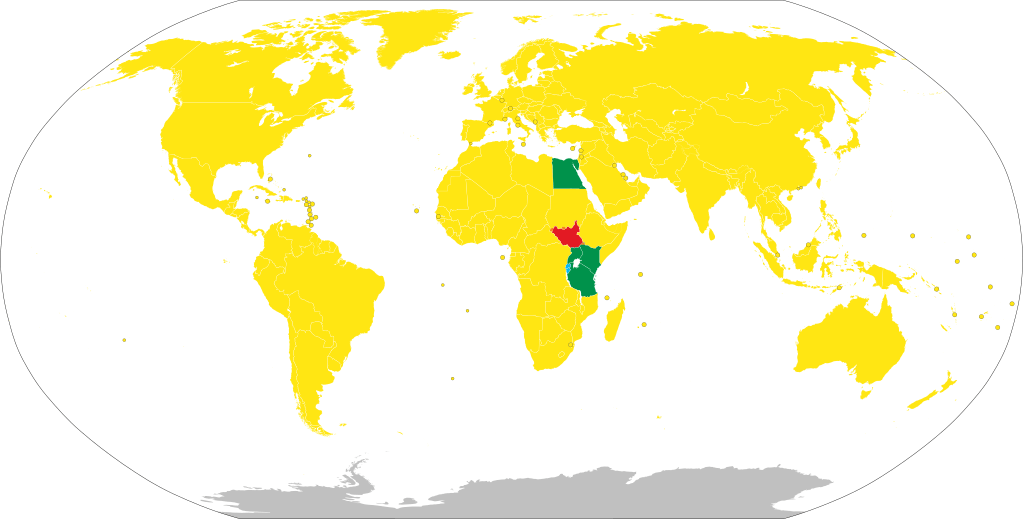
Visa policy map of South Sudan, with those nationalities which require an e-Visa highlighted in yellow.
Source: Wikipedia.
Almost all nationalities (yellow on the above map) require an e-Visa to visit South Sudan.
You can check your visa requirements by consulting the Visa Policy of South Sudan.
eVisa Process

My South Sudan e-Visa.
You should only use the official government website when applying for a South Sudan e-Visa.
The eVisa website can be accessed at – https://evisa.gov.ss/
There are many steps (10 in fact!) and many documents which need to be uploaded when applying for a South Sudan e-Visa.
You are required to supply details regarding your next of kin, current employer with full contact details and much more!
It’s a very thorough and detailed application process. Too many questions!
Note:
Documents need to be uploaded in JPG format and the size limits are small at around 300-500kb per file.
PDF format is not accepted.
Applicants should follow these steps:
- Open the official e-Visa page of the Republic of South Sudan.
- Create an account using the option on the homepage.
- Fill out the account with all the required information.
- Choose the type of visa you want to apply for.
- Fill out the application form.
- Attach the required documents to support your visa application.
Required Documents List (all in JPG format):
- A passport photo with the dimensions 2×2 inch (5x5cm)
- The copy of your passport photo page.
- A copy of your Letter of Invitation (LOI).
- A negative Covid-19 test. (Is this still 2020? I uploaded my Covid-19 vaccination certificate which was accepted).
- A copy of your Yellow Fever Vaccination Certificate. (This is also checked upon arrival at Juba Airport).
- Pay the e-Visa application fee of USD$120 using a credit card. Note: The payment failed the first time for me. I simply tried again and it was accepted.
- Within 72 hours, your approved e-Visa should appear on your account where it must be downloaded and printed.
Note:
You will not receive any email notification regarding the status of your e-Visa application.
Instead, you must login to your account and check the status of your application on the e-Visa website.
Once your e-Visa has been approved (within 72 hours), it will be posted on the official website from where you should download it and print it.
A printed version of the e-Visa must be presented upon arrival at Juba International Airport.
Getting There

My boarding pass, from Addis Ababa to Juba with Ethiopian Airlines.
Air
All international flights arrive at Juba International Airport (IATA: JUB) which is located a short drive from downtown Juba.
The following airlines provide scheduled flights to/ from Juba International Airport:
- African Express Airways – flies to/ from Nairobi–Jomo Kenyatta
- Egyptair – flies to/ from Cairo
- Ethiopian Airlines – flies to/ from Addis Ababa, Entebbe
- Fly540 – flies to/ from Nairobi–Jomo Kenyatta
- flydubai – flies to/ from Dubai–International
- Kenya Airways – flies to/ from Nairobi–Jomo Kenyatta
- RwandAir – flies to/ from Entebbe, Kigali
- Sky Travel and Aviation – flies to/ from Gulu
- Turkish Airlines – flies to/ from Istanbul
- Uganda Airlines – flies to/ from Entebbe
Addis Ababa Skylight In-terminal Hotel

My very comfortable room at the Addis Ababa Skylight In-Terminal Hotel.
On my trip to South Sudan, I flew with Ethiopian Airlines, via Addis Ababa International Airport.
Ethiopian Airlines are one of the largest airlines in Africa, providing daily connections to 63 African cities from their hub at Addis Ababa International Airport.
As one of the main aviation hubs in Africa, many travellers spend time transiting through Addis Ababa International Airport.

Located in a quiet, remote, corner of Addis Ababa airport, the Skylight In-Terminal Hotel can be found by following the green signs inside the terminal.
If you have a prolonged layover at the airport, I highly recommend checking into the excellent Skylight In-Terminal Hotel.
The hotel is located in a quiet corner of the airport, away from all the usual airport noise such as boarding announcements.
You can find the hotel by following the green “Skylight In-Terminal Hotel” signs on the airside of the terminal.

The reception desk at the Skylight In-Terminal Hotel.
Eventually, you’ll reach a reception desk where friendly and efficient staff will assist you with a room.

Current rates (May 2024) at the Skylight In-Terminal Hotel.
Rooms can be booked in different time bands from 1-3 hours; 4-6 hours; 7-12 hours; 13-24 hours or 24 hours.
I booked a Standard room for 7-12 hours at a cost of US$100. Totally worth it!
Payment can be made with credit card!

The beautiful bathroom in my room at the Skylight In-Terminal Hotel.
The hotel offers 97 tranquil havens in five different categories.
At no stage do you exit immigration or customs.
You do not need any entry documents for Ethiopia to stay in a room on the ‘airside‘ of this hotel.
If you are staying in Ethiopia, the hotel also offers 1,024 comfortably modern rooms and suites on the ‘landside‘ of the terminal.

The restaurant at the Skylight In-Terminal Hotel serves meals around the clock.
The restaurant at the Skylight In-Terminal Hotel never closes, with hungry transit passengers arriving 24 hours a day.
Breakfast is especially good and flight departure boards ensure you won’t miss your flight.
Road
Uganda
Currently, the main land border crossing into South Sudan is in the town of Nimule, Uganda.
A heavily pot-holed road connects Juba to Nimule with a total driving distance of 193 km (120 mi), with a driving time of 4.5 hours.
Possibly, this road was built during the British colonial period and has not been maintained, in any way, since.
As this is the only (terribly) paved route into the country from the south, this busy road serves as the main route for all goods entering land-locked South Sudan from Mombasa port.
The road is very busy with Kenyan and Ugandan trucks delivering all manner of goods into South Sudan.
Adding to the chaos, totally unnecessary police checkpoints add considerable delays to the journey. These checkpoints are nothing more than a place for corrupt officials to collect bribes from passing motorists, especially the many truck drivers.
One checkpoint, on the southern outskirts of Juba, sees trucks queued for 5-10 km in each direction, waiting to pass through the checkpoint (once they have paid the required bribe!).
Kenya
The South Sudan border town of Nadapal, lies across the border from Kenya’s Turkana Province.
The 375 km (233 mi) gravel road between Nadapal and Juba is due to be upgraded to an international standard bitumen road. This project was approved in 2008 and has yet to start.
A bitumen highway will allow trucks to travel more directly from Mombasa port to Juba, rather than through Uganda as is the current route.
Currently, the bad roads make this a 2-day, epic, journey.
Getting Around

A very good stretch of red-earth road in Eastern Equatoria state.
Public Transport
There is little in the way of public transport in South Sudan.
If you plan to visit different tribes, they tend to inhabit the remote back-corners of the country and are only accessible with a private car, driver and a guide.
Taxi
The best taxi company in Juba is RABA Taxi.
You can book taxis via their website or via their app:
- RABA Taxi: Google Play Store app.
- RABA Taxi: Apple Store app.
Rental Car

The only good road in South Sudan is this one Chinese-built highway which runs north of Juba.
Forget it!
The poorly maintained roads are unmarked, diabolical and you have many corrupt officials to contend with.
Better to leave the driving to locals who know the roads.
That’s the end of my South Sudan Travel Guide.
If you wish to leave any comments or contact me, you can do so using the form below or the via the Contact page.
Safe Travels!
Darren
Further Reading
Following is a list of my travel content from the region:
Author: Darren McLean
Darren McLean is an Australian, full-time, digital nomad who has spent 37 years on a slow meander around the globe, visiting all seven continents, 192/ 193 UN countries and 245/ 251 UN+ countries and territories.
He founded taste2travel to pique one’s curiosity and inspire wanderlust.
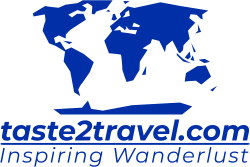







Wow, Darren, most impressive! making me REALLY want to go – so am most appreciative of all your detailed how-to’s. Thanx & bravos!
Hi Julie,
Many thanks for your positive feedback.
I know you would enjoy visiting South Sudan.
Safe Travels!
Darren